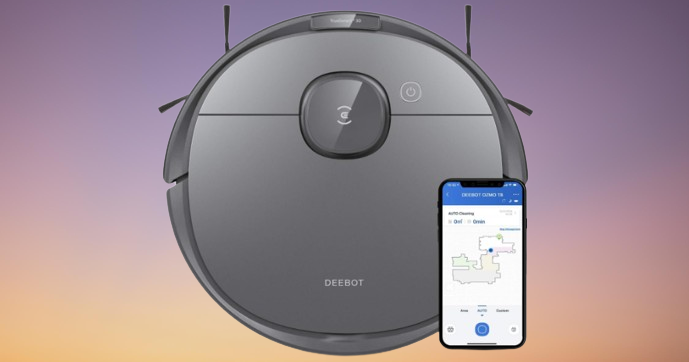If you’re one of the millions of people who suffer from allergies, you know how important it is to keep your home clean and free of allergens. One of the best ways to do this is by using the right vacuum cleaner. But with so many options out there, it can be tough to know which one to choose.
Don’t worry, though! We’ve done the research and testing to bring you the ultimate guide to choosing the best vacuum for allergies in 2024. We’ll cover everything you need to know, from the key features to look for to the top vacuums on the market. By the end of this post, you’ll be equipped with the knowledge to make an informed decision and breathe easier in your home.
So, let’s dive in and discover the world of allergy-friendly vacuums together.
Understanding HEPA Filters
Now, let’s talk about one of the most important features to look for in a vacuum for allergies: the HEPA filter. You might have heard this term before, but what exactly is a HEPA filter, and how does it work?
HEPA stands for “High-Efficiency Particulate Air.” A HEPA filter is a special type of filter that’s designed to capture even the tiniest particles, including allergens like dust, pollen, and pet dander. To be considered a true HEPA filter, it must be able to trap at least 99.97% of particles that are 0.3 microns or larger. That’s really small – for comparison, a human hair is about 50 microns wide!
So, how does a HEPA filter work? As the vacuum sucks up air and debris, the air passes through the HEPA filter before being expelled back into the room. The filter’s dense network of fibers catches and traps the tiny allergen particles, preventing them from recirculating in your home’s air.
Using a vacuum with a HEPA filter can make a big difference for allergy sufferers. By removing allergens from your floors, upholstery, and other surfaces, you can reduce your exposure and minimize symptoms like sneezing, runny nose, and itchy eyes.
One thing to watch out for is that some vacuums claim to have “HEPA-like” or “HEPA-type” filters, but these aren’t the real deal. To get the full benefits, make sure you choose a vacuum with a true HEPA filter.
Best Types of Vacuums for Allergies
When it comes to vacuums for allergies, there are a few different types to choose from. Let’s take a closer look at each one and discuss some of the best models available.
A. Upright Vacuums
Upright vacuums are a popular choice for many homes, and they can be a great option for allergy sufferers too. Here are some pros and cons to consider:
Pros:
- Powerful suction for deep cleaning carpets
- Wide cleaning path covers more area in less time
- Often come with attachments for cleaning stairs, upholstery, and crevices
- Many models have HEPA filters
Cons:
- Can be heavy and difficult to maneuver, especially on stairs
- Some models are louder than other types of vacuums
- May not be as effective on hard floors as canister vacuums
Best Upright Vacuums for Allergies:
Shark Navigator Lift-Away
This vacuum has a sealed system and a HEPA filter to trap allergens. It also has a lift-away canister for easier cleaning of stairs and hard-to-reach areas.
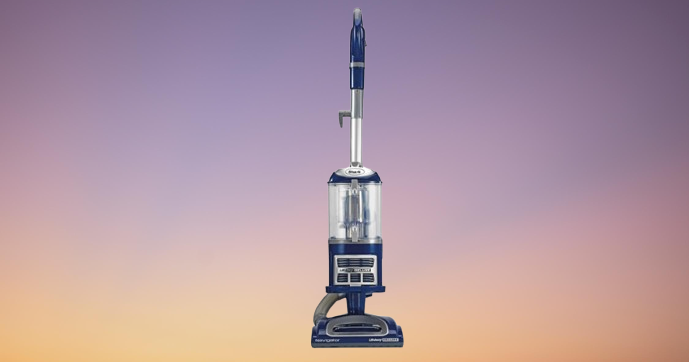
Features:
- Lift-away canister for easy cleaning of stairs and hard-to-reach areas
- Anti-Allergen Complete Seal Technology and a HEPA filter
- Swivel steering for easy maneuverability
- Brush roll shutoff for gentle cleaning on hard floors
- Includes a crevice tool, dusting brush, and wide upholstery tool
Dyson Ball Animal 2
With a whole-machine HEPA filtration system and powerful suction, this vacuum is great for homes with pets. It also has a self-adjusting cleaner head for different floor types.
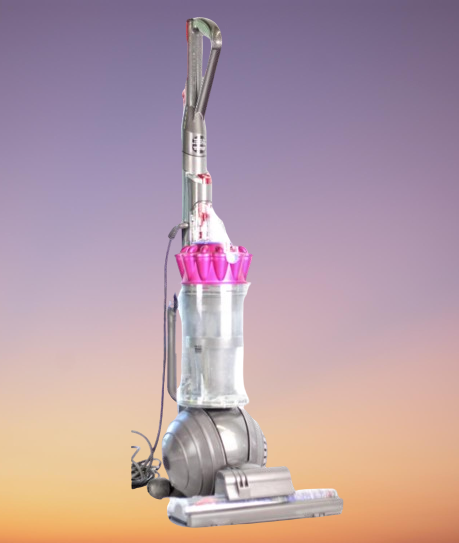
Features:
- Self-adjusting cleaner head automatically adjusts to different floor types
- Whole-machine HEPA filtration captures allergens and expels cleaner air
- Tangle-free turbine tool for removing pet hair from upholstery and tight spaces
- Ball technology for easy steering and maneuverability
- Includes a stair tool, combination tool, and reach-under tool
Kenmore Elite 31150
This vacuum is certified by the Asthma and Allergy Foundation of America and has a HEPA filter and a sealed system. It also comes with a pet handi-mate tool for removing pet hair from upholstery.
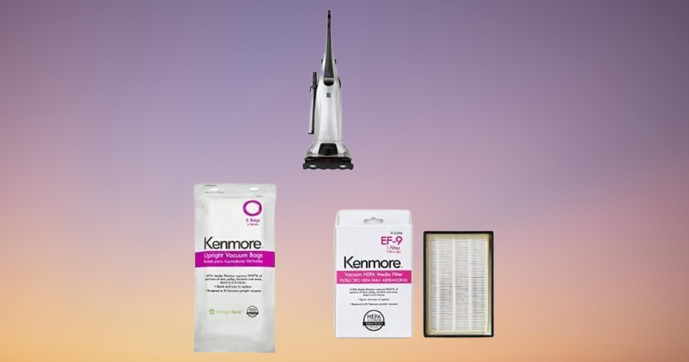
Features:
- Certified by the Asthma and Allergy Foundation of America
- Powerful 3D Inducer Motor for strong suction
- Infrared dirt sensor detects hidden dirt and debris
- Includes a pet handi-mate tool, crevice tool, and combination dusting/upholstery tool
- Adjustable height settings for different floor types
B. Canister Vacuums
Canister vacuums are another excellent choice for allergy sufferers. Here’s what you need to know:
Pros:
- Lighter and more maneuverable than upright vacuums
- Ideal for cleaning hard floors, stairs, and tight spaces
- Often quieter than upright vacuums
- Many models have HEPA filters
Cons:
- May not have as much suction power as upright vacuums
- Canister can be harder to store than upright models
Best Canister Vacuums for Allergies:
Miele Complete C3 Marin
This high-end canister vacuum has a sealed system, HEPA filter, and powerful suction. It also comes with a variety of attachments for different cleaning needs.
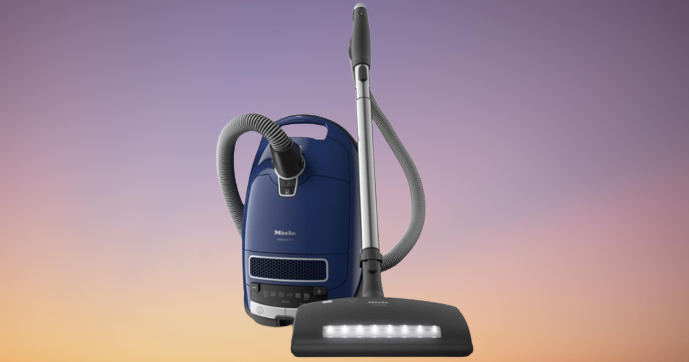
Features:
- Sealed system with a HEPA AirClean filter
- Electrobrush with LED headlight for deep cleaning carpets
- Parquet Twister XL floor brush for gentle cleaning on hard floors
- Adjustable suction control via foot switches and a six-stage rotary dial
- Includes a dusting brush, upholstery tool, and crevice nozzle
Kenmore 600 Series
With a HEPA filter, adjustable suction control, and a telescoping wand, this vacuum is great for allergy sufferers on a budget.

CHECK PRICE
Features:
- Bagged canister vacuum with a HEPA filter
- Adjustable suction control for different floor types and cleaning tasks
- Aluminum telescoping wand for extended reach
- Includes a crevice tool, dusting brush, and upholstery tool
- Automatic cord rewind for easy storage
Bissell Hard Floor Expert
Designed specifically for hard floors, this vacuum has a sealed system and a HEPA filter to capture allergens. It also has a telescoping wand and a crevice tool for cleaning tight spaces.
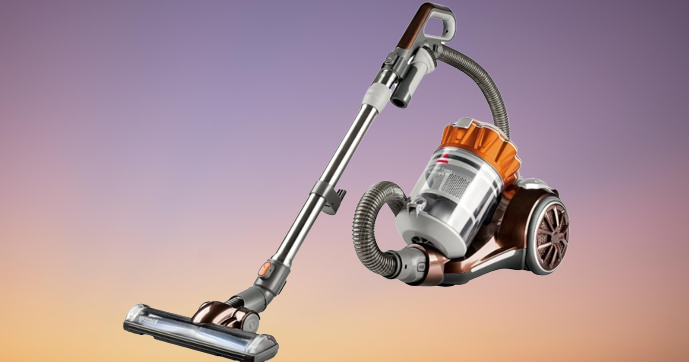
Features:
- Specialized hard floor vacuum with a V-shaped foot for capturing debris
- Sealed system with a HEPA filter
- Adjustable suction control for different floor types
- Telescoping wand for extended reach and above-floor cleaning
- Includes a crevice tool and a dusting brush
C. Cordless Stick Vacuums
Cordless stick vacuums have become increasingly popular in recent years, and many models now offer features that make them a good choice for allergy sufferers.
Pros:
- Lightweight and easy to maneuver
- Convenient for quick cleanups and small spaces
- Many models have HEPA filters
- Can be stored easily in a closet or corner
Cons:
- Shorter battery life than corded models
- May not have as much suction power as upright or canister vacuums
- Dust bin needs to be emptied more frequently
Best Cordless Stick Vacuums for Allergies:
Dyson V11 Torque Drive
With a sealed system, HEPA filter, and powerful suction, this cordless vacuum is great for allergy sufferers. It also has a long battery life and an LCD screen that displays performance info.
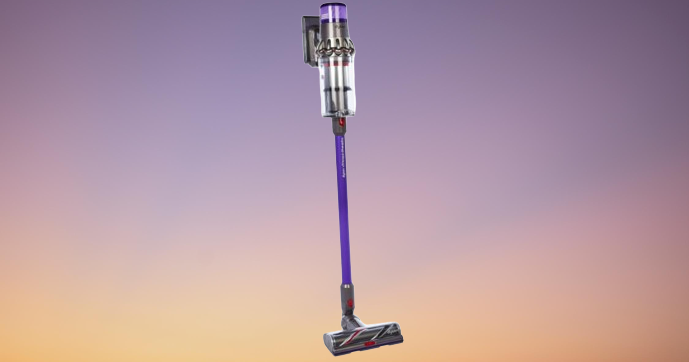
Features:
- Cordless stick vacuum with up to 60 minutes of run time
- Sealed system with a HEPA filter
- LCD screen displays real-time performance and remaining run time
- Dynamic Load Sensor (DLS) technology automatically adjusts suction power based on floor type
- Includes a crevice tool, combo tool, mini motorized tool, and a stubborn dirt brush
Shark IonFlex DuoClean:
This vacuum has a bendy wand for getting under furniture, a sealed system, and a HEPA filter. It also comes with a variety of attachments for different cleaning needs.
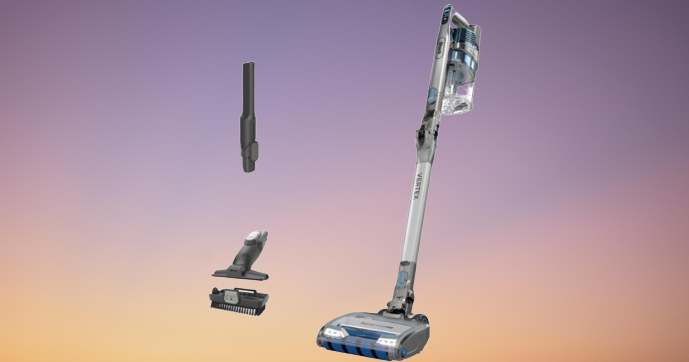
Features:
- Cordless stick vacuum with a bendable wand for cleaning under furniture
- DuoClean technology features a bristle brush and a soft roller for improved cleaning performance
- MultiFLEX technology allows for compact storage
- Includes a duster crevice tool, upholstery tool, and an anti-allergen dust brush
- Up to 50 minutes of runtime on a single charge
Tineco A11 Hero
With a 4-stage filtration system that includes a HEPA filter, this vacuum is excellent at capturing allergens. It also has a long battery life and comes with a variety of attachments.
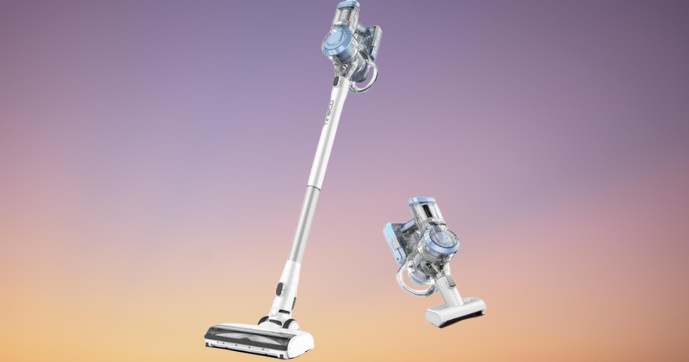
Features:
- Cordless stick vacuum with a 4-stage sealed filtration system and a HEPA filter
- Up to 40 minutes of runtime on a single charge
- LED power brush with lights illuminates hidden dust and debris
- Includes a mini power brush, 2-in-1 dusting brush, and a crevice tool
- Lightweight design at just 5.5 lbs
D. Robot Vacuums
If you want to keep your home clean without lifting a finger, a robot vacuum might be the way to go. Many models now have features that make them a good choice for allergy sufferers.
Pros:
- Convenient and easy to use
- Can be scheduled to clean while you’re away
- Many models have HEPA filters
- Some models have self-emptying dust bins
Cons:
- May not clean as thoroughly as other types of vacuums
- Can get stuck on cords or other obstacles
- Can be expensive
Best Robot Vacuums for Allergies:
iRobot Roomba i7+
This high-end robot vacuum has a 3-stage cleaning system, a HEPA filter, and a self-emptying dust bin. It also learns your home’s layout for more efficient cleaning.
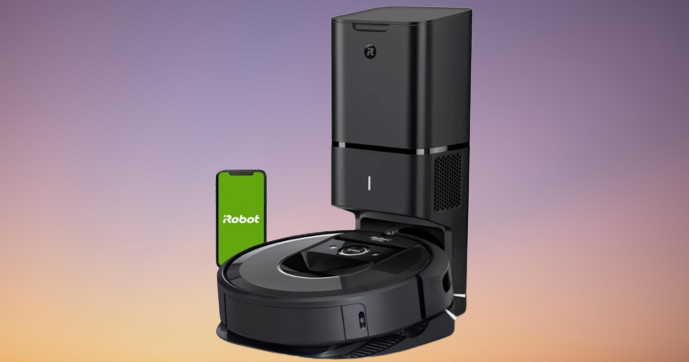
Features:
- Robot vacuum with a 3-stage cleaning system and a high-efficiency filter
- Imprint Smart Mapping technology learns your home’s layout for efficient cleaning
- Automatically empties its dustbin into the Clean Base for up to 60 days
- Works with Google Assistant and Amazon Alexa for voice control
- Ideal for homes with pets
Neato Botvac D7
With a large dust bin, a HEPA filter, and laser navigation, this robot vacuum is great for allergy sufferers. It also has virtual boundaries to keep it out of certain areas.

Features:
- Robot vacuum with laser navigation and a high-performance filter
- Up to 120 minutes of runtime on a single charge
- No-Go Lines technology allows you to set virtual boundaries
- Zone cleaning allows you to target specific areas for cleaning
- Works with Google Assistant and Amazon Alexa for voice control
Ecovacs Deebot Ozmo T8 AIVI
This robot vacuum has a HEPA filter, a mopping function, and advanced obstacle avoidance technology. It also has a long battery life and can be controlled with your smartphone.
Features:
- Robot vacuum and mop with a 4-stage filtration system and a HEPA filter
- Advanced obstacle avoidance technology using artificial intelligence and visual interpretation
- Up to 3 hours of runtime on a single charge
- Ozmo mopping system with adjustable water flow control
- Works with Google Assistant and Amazon Alexa for voice control
Key Features to Consider in the Best Vacuum for Allergies
When shopping for a vacuum for allergies, there are a few key features to keep in mind:
- Filtration System: As we’ve discussed, a true HEPA filter is essential for trapping allergens. Look for vacuums with sealed systems and multi-stage filtration for the best results.
- Bagged vs. Bagless: Bagged vacuums can be a good choice for allergy sufferers because they keep dust and allergens contained. However, bagless models can be more convenient and economical. If you choose a bagless vacuum, look for one with a sealed system and a HEPA filter.
- Suction Power: Strong suction is important for deep cleaning carpets and removing allergens. Look for vacuums with adjustable suction settings for different floor types.
- Attachments: Attachments like crevice tools, dusting brushes, and upholstery tools can help you clean hard-to-reach areas and remove allergens from surfaces other than floors.
- Ease of Use: Consider factors like weight, maneuverability, and cord length when choosing a vacuum. You want a model that’s easy to use and won’t cause fatigue or frustration.
Top Vacuums for Allergies in 2024
Based on our research and testing, here are our top picks for the best vacuums for allergies in 2024:
Best Overall: Shark Navigator Lift-Away
- Sealed system and HEPA filter
- Powerful suction and lift-away canister
- Affordable price point
Best Splurge: Miele Complete C3 Marin
- Sealed system and HEPA filter
- Powerful suction and adjustable settings
- Comes with a variety of attachments
Best Cordless: Dyson V11 Torque Drive
- Sealed system and HEPA filter
- Long battery life and LCD screen
- Powerful suction and variety of attachments
Tips for Maintaining Your Vacuum and Reducing Allergens
In addition to choosing the right vacuum, there are a few things you can do to keep your home as allergen-free as possible:
- Vacuum regularly: Aim to vacuum high-traffic areas at least twice a week, and less-used areas once a week.
- Change your filters: Replace or wash your vacuum’s filters according to the manufacturer’s instructions.
- Empty the dust bin or change the bag: Empty bagless models after each use, and change vacuum bags when they’re 2/3 full.
- Clean your vacuum: Wipe down your vacuum’s exterior and attachments regularly to remove dust and debris.
- Use other cleaning methods: In addition to vacuuming, use a damp cloth or mop to remove allergens from surfaces like blinds, baseboards, and hard floors.
Read More : The Best Rugged Smartwatches of 2024
FAQ
How often should I replace my vacuum’s HEPA filter?
It depends on the model and how often you use your vacuum. Check your owner’s manual for specific recommendations, but in general, aim to replace your HEPA filter every 6-12 months.
Are bagged vacuums better than bagless models for allergies?
Bagged vacuums can be a good choice for allergy sufferers because they keep dust and allergens contained. However, bagless models with sealed systems and HEPA filters can be just as effective.
Can vacuuming make my allergies worse?
If you’re using a vacuum without a HEPA filter or sealed system, vacuuming can actually stir up allergens and make your symptoms worse. That’s why it’s important to choose a vacuum with the right features for allergy sufferers.
How often should I vacuum if I have allergies?
Aim to vacuum high-traffic areas at least twice a week, and less-used areas once a week. If you have severe allergies, you may want to vacuum more frequently.
Conclusion
Choosing the right vacuum can make a big difference in managing your allergies and keeping your home clean and healthy. Look for models with HEPA filters, sealed systems, and powerful suction, and consider factors like ease of use and attachments when making your decision.
By following the tips in this guide and choosing one of our top picks for the best vacuums for allergies in 2024, you’ll be well on your way to breathing easier and enjoying a cleaner, healthier home.


